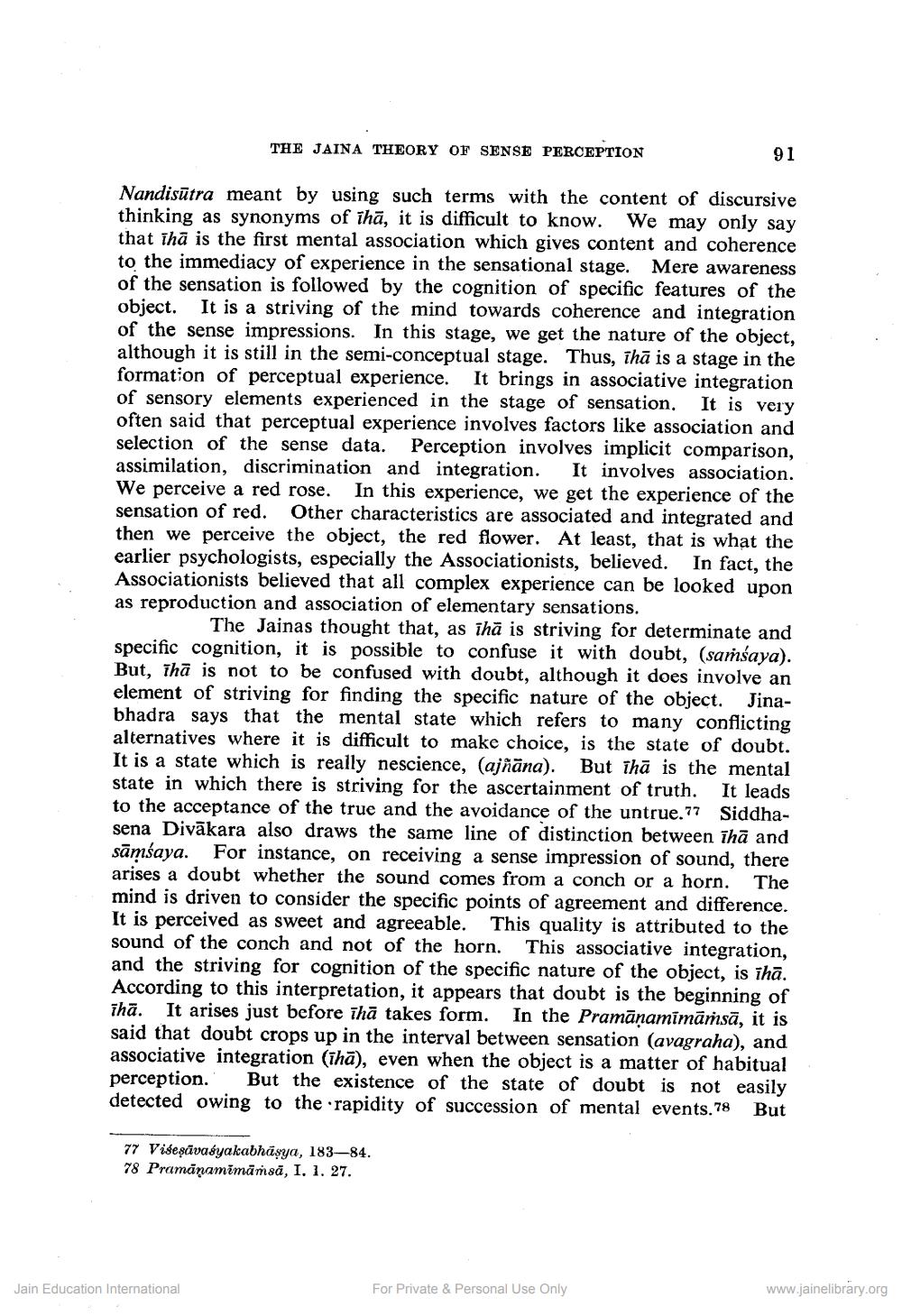________________
THE JAINA THEORY OF SENSE PERCEPTION
91
Nandisūtra meant by using such terms with the content of discursive thinking as synonyms of ihā, it is difficult to know. We may only say that ihā is the first mental association which gives content and coherence to the immediacy of experience in the sensational stage. Mere awareness of the sensation is followed by the cognition of specific features of the object. It is a striving of the mind towards coherence and integration of the sense impressions. In this stage, we get the nature of the object, although it is still in the semi-conceptual stage. Thus, ihā is a stage in the formation of perceptual experience. It brings in associative integration of sensory elements experienced in the stage of sensation. It is very often said that perceptual experience involves factors like association and selection of the sense data. Perception involves implicit comparison, assimilation, discrimination and integration. It involves association. We perceive a red rose. In this experience, we get the experience of the sensation of red. Other characteristics are associated and integrated and then we perceive the object, the red flower. At least, that is what the earlier psychologists, especially the Associationists, believed. In fact, the Associationists believed that all complex experience can be looked upon as reproduction and association of elementary sensations.
The Jainas thought that, as īhā is striving for determinate and specific cognition, it is possible to confuse it with doubt, (samsaya). But, ihā is not to be confused with doubt, although it does involve an element of striving for finding the specific nature of the object. Jinabhadra says that the mental state which refers to many conflicting alternatives where it is difficult to make choice, is the state of doubt. It is a state which is really nescience, (ajñāna). But ihā is the mental state in which there is striving for the ascertainment of truth. It leads to the acceptance of the true and the avoidance of the untrue.77 Siddhasena Divākara also draws the same line of distinction between ihā and sāmíaya. For instance, on receiving a sense impression of sound, there arises a doubt whether the sound comes from a conch or a horn. The mind is driven to consider the specific points of agreement and difference. It is perceived as sweet and agreeable. This quality is attributed to the sound of the conch and not of the horn. This associative integration, and the striving for cognition of the specific nature of the object, is īhā. According to this interpretation, it appears that doubt is the beginning of īhā. It arises just before ihā takes form. In the Pramāṇamīmāṁsā, it is said that doubt crops up in the interval between sensation (avagraha), and associative integration (ihā), even when the object is a matter of habitual perception. But the existence of the state of doubt is not easily detected owing to the .rapidity of succession of mental events.78 But
77 Viseşāvasyakabhâsya, 183–84. 78 Pramānamimāṁsā, I. 1. 27.
www.jainelibrary.org
Jain Education International
For Private & Personal Use Only




